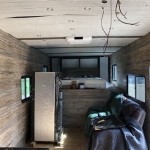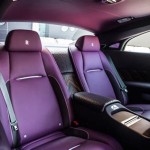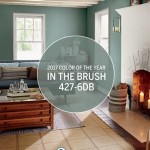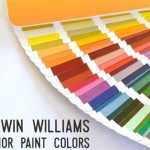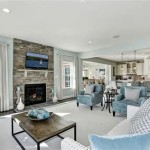What Are The Main Interior Design Styles?
Interior design encompasses a broad spectrum of styles, each reflecting distinct aesthetic principles, historical influences, and cultural preferences. Understanding these diverse styles is crucial for creating spaces that resonate with personal tastes and functional needs. This article aims to provide an overview of some of the main interior design styles prevalent today, highlighting their characteristics and key elements.
Modern
Modern interior design is often confused with contemporary design, but it represents a specific period – primarily the early to mid-20th century. Rooted in the Bauhaus movement and Scandinavian design philosophies, modern design emphasizes functionality, simplicity, and a connection with nature. Ornamentation is minimized, and clean lines are paramount. Spaces tend to be open and airy, promoting a sense of calm and order.
Key characteristics of modern interior design include:
Clean Lines and Geometric Shapes: Furniture and architectural details often feature straight lines and basic geometric forms. Curves are used sparingly and typically in a refined manner.
Neutral Color Palette: Modern interiors typically employ a neutral color scheme dominated by whites, beiges, grays, and blacks. Pops of color may be introduced through artwork, textiles, or accessories, but the overall effect remains restrained.
Natural Materials: Wood, leather, stone, and metal are frequently used, often in their raw or minimally processed state. These materials add warmth and texture to the space while maintaining a sense of authenticity.
Minimalism and Functionality: Clutter is avoided, and every element in the space serves a purpose. Furniture is often multi-functional and designed to maximize space efficiency.
Open Floor Plans: Modern homes often feature open floor plans that allow for greater interaction and flow between living spaces.
Contemporary
Contemporary interior design is constantly evolving to reflect the trends and sensibilities of the present moment. It is not tied to any specific historical period, which allows for greater flexibility and experimentation. While sharing some similarities with modern design, contemporary design is often more eclectic and incorporates elements from various styles.
Key characteristics of contemporary interior design include:
Current Trends: Contemporary design embraces current trends in color, materials, and technology. This can include the use of bold colors, innovative lighting solutions, and smart home technology.
Open and Airy Spaces: Similar to modern design, contemporary interiors emphasize open floor plans and natural light. Large windows and skylights are common features.
Sleek and Minimalist Decor: While not always as strictly minimalist as modern design, contemporary interiors generally avoid excessive ornamentation. Furniture is often sleek and streamlined, with clean lines and simple forms.
Use of Texture: Contemporary design relies heavily on texture to add visual interest and depth to a space. This can be achieved through the use of different materials, such as textured fabrics, natural stone, and exposed brick.
Art as a Focal Point: Artwork plays a crucial role in contemporary interiors. Bold and abstract pieces are often used to create a statement and add personality to the space.
Traditional
Traditional interior design draws inspiration from European styles of the 18th and 19th centuries, such as English Regency, French Provincial, and Victorian. It emphasizes formality, elegance, and a sense of history. Spaces are typically richly decorated with ornate details, luxurious fabrics, and antique furniture.
Key characteristics of traditional interior design include:
Ornate Details: Traditional interiors are characterized by intricate moldings, carved details, and decorative embellishments. These details add a sense of grandeur and sophistication to the space.
Rich Colors and Patterns: Traditional color palettes often include deep reds, greens, blues, and golds. Patterns such as floral prints, damask, and toile are frequently used on fabrics and wallpapers.
Formal Furniture: Furniture is typically made of dark wood and upholstered in luxurious fabrics such as velvet, silk, and brocade. Pieces are often large and imposing, reflecting a sense of formality and permanence.
Symmetry and Balance: Traditional spaces are carefully arranged to create a sense of symmetry and balance. Furniture is often placed in pairs, and architectural details are symmetrical.
Accessories and Antiques: Accessories such as chandeliers, mirrors, and antique clocks are used to add character and history to the space. Collectibles and family heirlooms are often prominently displayed.
Minimalist
Minimalist interior design, as the name suggests, embraces simplicity and functionality above all else. It is characterized by clean lines, a neutral color palette, and a deliberate absence of clutter. The goal is to create a serene and uncluttered space that promotes a sense of calm and focus.
Key characteristics of minimalist interior design include:
Less is More: Minimalism is founded on the principle that less is more. Every element in the space is carefully considered and serves a purpose. Unnecessary items are eliminated.
Neutral Color Palette: White, gray, and beige dominate minimalist interiors. These colors create a sense of calm and spaciousness. Accents of black or natural wood may be used to add depth and warmth.
Clean Lines and Simple Forms: Furniture is typically simple and functional, with clean lines and geometric shapes. Ornamentation is kept to a minimum.
High-Quality Materials: Because there are fewer items in the space, the quality of each piece becomes even more important. Minimalist interiors often feature high-quality materials such as natural wood, stone, and leather.
Focus on Functionality: Every element in the space is designed to be functional and practical. Storage solutions are essential to keep clutter at bay.
Industrial
Industrial interior design draws inspiration from warehouses, factories, and other industrial spaces. It celebrates raw materials, exposed architectural elements, and a utilitarian aesthetic. This style is often found in lofts and converted industrial buildings.
Key characteristics of industrial interior design include:
Exposed Brick and Concrete: Exposed brick walls and concrete floors are hallmarks of industrial design. These raw materials add texture and character to the space.
Exposed Pipes and Ductwork: Rather than concealing pipes and ductwork, industrial design celebrates these functional elements. They are often left exposed and painted in bold colors.
Metal Accents: Metal is a key material in industrial design. Furniture, lighting fixtures, and accessories often feature metal in its raw or weathered state.
Reclaimed and Repurposed Materials: Industrial design often incorporates reclaimed and repurposed materials, such as salvaged wood and vintage metal furniture.
Open Floor Plans: Industrial spaces typically feature open floor plans that allow for maximum flexibility and functionality.
Bohemian
Bohemian interior design is characterized by its eclectic, relaxed, and unconventional style. It embraces a mix of colors, patterns, and textures, creating a space that is both visually stimulating and comfortable. There are few rules in bohemian design, allowing for a highly personalized and expressive space.
Key characteristics of bohemian interior design include:
Eclectic Mix of Styles: Bohemian interiors often blend elements from various styles, such as vintage, ethnic, and modern. This creates a unique and personalized look.
Bold Colors and Patterns: Bohemian color palettes are often vibrant and saturated, with a mix of jewel tones, earthy hues, and bright accents. Patterns such as paisley, floral prints, and geometric designs are used liberally.
Textiles and Textures: Textiles play a crucial role in bohemian design. Layered rugs, throw pillows, and macrame wall hangings add texture and warmth to the space.
Vintage and Handmade Items: Bohemian interiors often feature vintage furniture, handmade crafts, and collectibles from around the world.
Plants and Natural Elements: Plants are an essential element of bohemian design. They add life and vibrancy to the space, creating a connection with nature.
Scandinavian
Scandinavian interior design emphasizes simplicity, functionality, and a connection with nature. It is characterized by clean lines, a neutral color palette, and a focus on natural light. The goal is to create a comfortable and inviting space that promotes a sense of well-being.
Key characteristics of Scandinavian interior design include:
Simplicity and Functionality: Scandinavian design prioritizes functionality and practicality. Furniture is often multi-functional and designed to maximize space efficiency.
Neutral Color Palette: White, gray, and beige dominate Scandinavian interiors. These colors create a sense of calm and spaciousness. Accents of natural wood and soft pastels may be used to add warmth and color.
Natural Light: Scandinavian design places a strong emphasis on natural light. Large windows and minimal window coverings are used to maximize daylight exposure.
Natural Materials: Wood is a key material in Scandinavian design. Light-colored woods such as birch and pine are commonly used for furniture, flooring, and wall paneling.
Cozy Textiles: Textiles such as sheepskin rugs, knitted blankets, and linen cushions add warmth and texture to Scandinavian interiors.
These are but a few of the prominent interior design styles. Other notable styles include Farmhouse, Coastal, Mid-Century Modern and Art Deco, each with their own distinct characteristics and appeal. The best approach for any individual is to research and experiment to find the style that best reflects their personal taste and lifestyle.

Interior Design Styles 101 The Ultimate Guide To Decorating In 2024 Decorilla

21 Most Popular Types Of Interior Design Styles In 2024 Foyr

Interior Design Styles Designteacher

Design Styles 101 The Guide To Every Interior Decorating Home

7 Most Popular Types Of Interior Design Styles In 2024 Beautiful Homes

The Selected Interior Design Styles Scientific Diagram

A Beginner S Guide To Home Interior Design Styles Designcafe

Interior Design Styles 101 The Ultimate Guide To Decorating In 2024 Decorilla

Design Styles Ideas Topics

Interior Design Styles For Beginners 9 Popular Explained Posh Pennies
Related Posts



